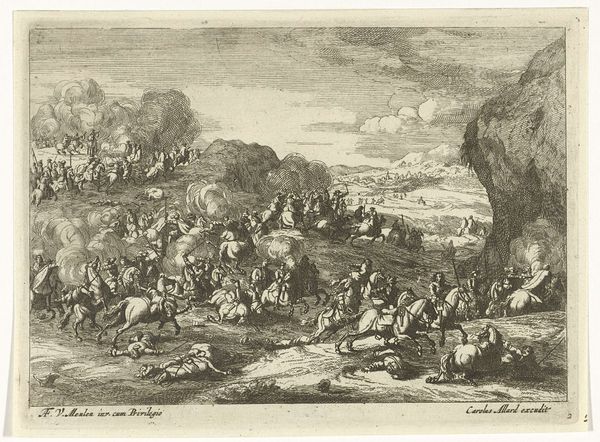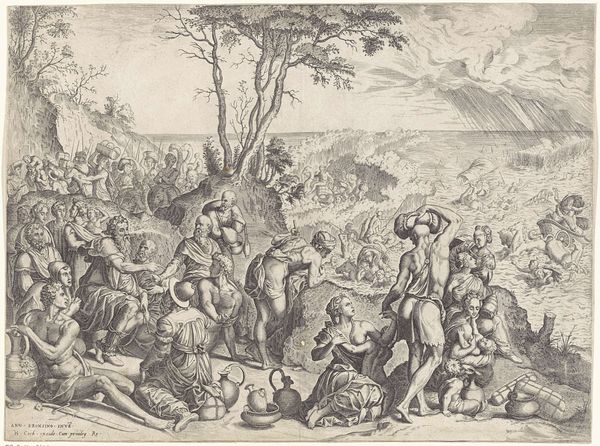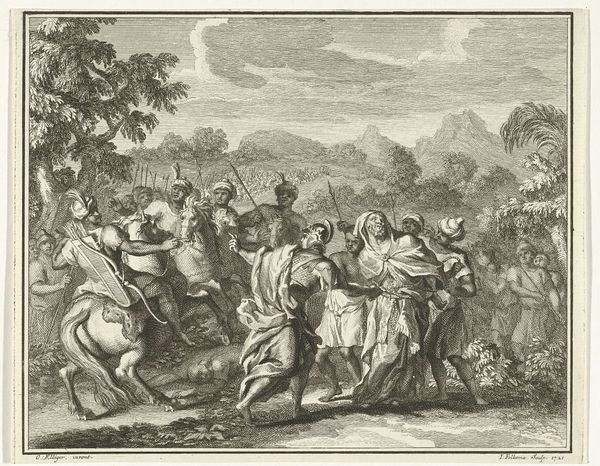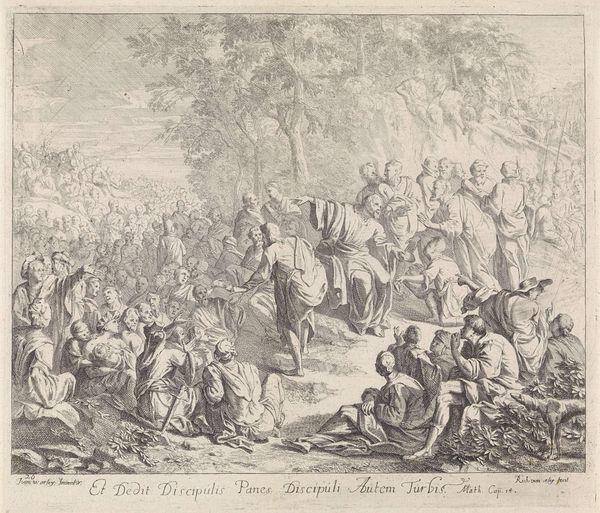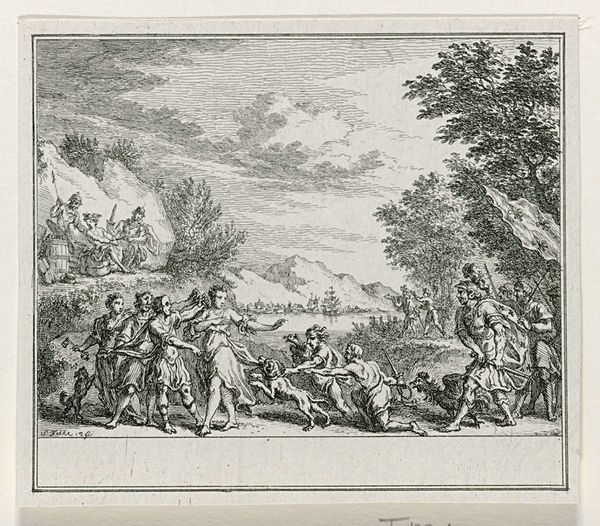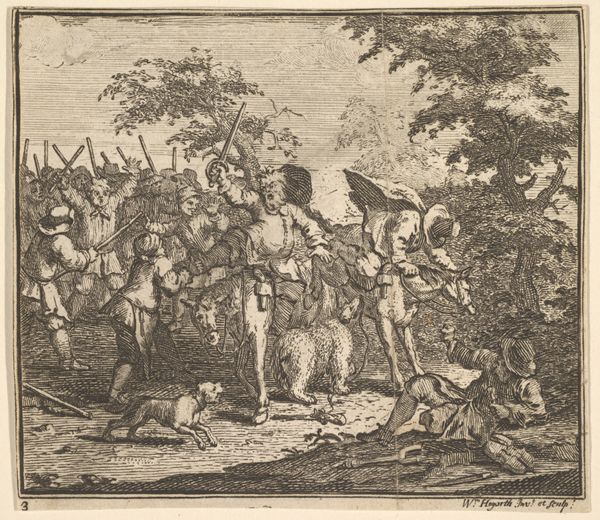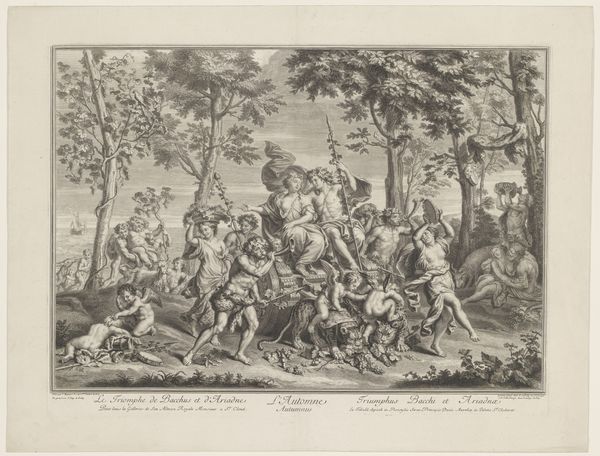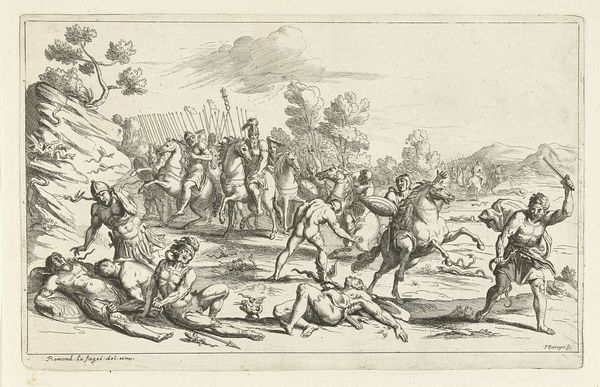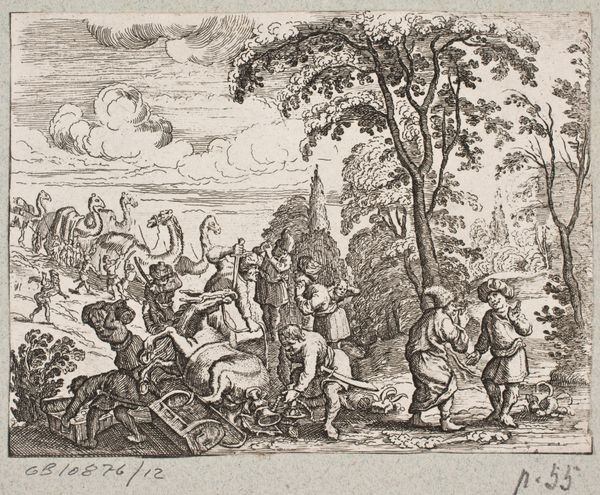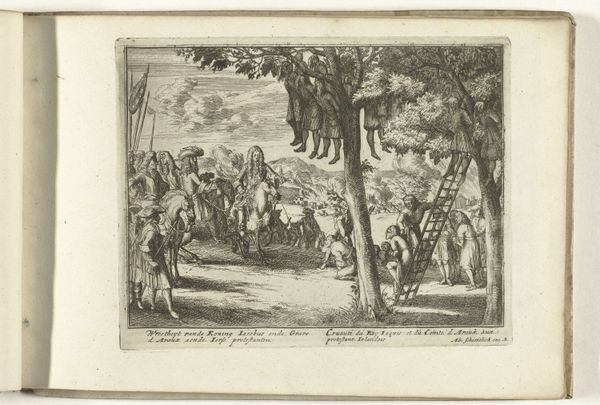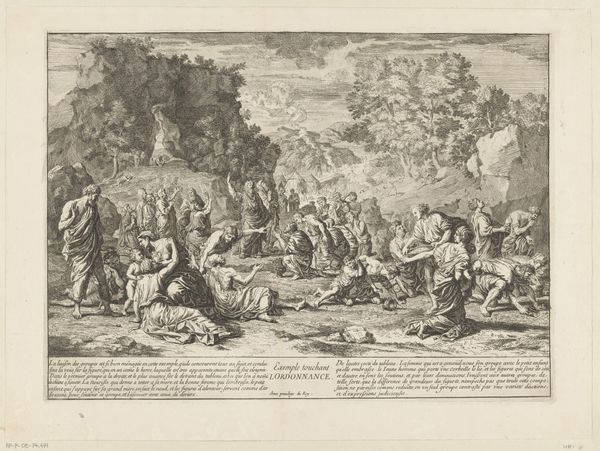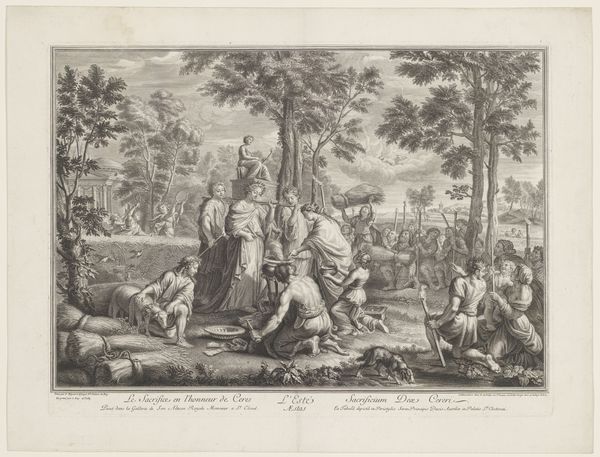
drawing, ink, pen
#
drawing
#
ink drawing
#
baroque
#
pen drawing
#
war
#
landscape
#
figuration
#
ink
#
pen
#
history-painting
Dimensions: height 120 mm, width 163 mm
Copyright: Rijks Museum: Open Domain
Curator: Before us, we have "Optrekkende Cavalerie" by Jan van Huchtenburg, made sometime between 1673 and 1709. It’s rendered in pen and ink. Editor: The overwhelming impression is movement, disorder—even violence. The diagonal sweep of the composition, from left to right, pulls your eye into the chaotic skirmish on the horizon. Curator: Observe how Huchtenburg uses line weight to create depth. The foreground figures are heavily delineated, granting them a stark presence. The artist carefully crafts the textural differentiation between the smooth hides of the horses and rough fabrics of the soldiers' garments. Editor: That textural detail really brings forth the raw energy of conflict. What stands out to me is how Huchtenburg uses the horse and rider as a potent symbol of power and authority, practically unchanged since antiquity. What deeper stories of war and leadership are conveyed through the figures on horseback? Curator: Precisely. The equestrian figures command visual dominance, positioned higher on the plane than the infantry, and notice how the artist focuses primarily on the riders and rendering only the basic shapes for the ground-based foot soldiers. A statement is implied on how leaders can appear, divorced or separate, from the mass of soldiers that are committed to conflict. Editor: Note how small the soldiers and violence are placed on the horizon relative to the scale and visual emphasis on the leaders. It echoes traditional depictions of battle scenes, doesn't it? Reinforcing certain established hierarchical codes and values of power, valor and sacrifice through warfare. It presents war as organized and glorious while subtly showcasing its raw nature. Curator: Van Huchtenburg certainly achieves a balanced dynamic in his choices between detail, scale, texture, and perspective, so there remains a constant play of tension through the entire scene. Editor: And in decoding these signs and symbols we are brought to face the many layers of interpretation—social, cultural, and emotional—that persist in our memory of conflict and human struggle.
Comments
No comments
Be the first to comment and join the conversation on the ultimate creative platform.

